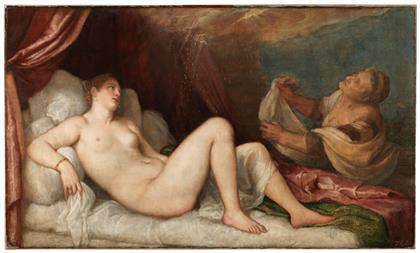
ED RUSCHA, Inner-City Make Scream, 2014
acrylic on canvas, 40 x 50 inches (101.6 x 127 cm)
Photo by Paul Ruscha
Gagosian Rome exhibits new paintings by Ed Ruscha ‘Ed Ruscha: Paintings’: Gagosian Gallery Rome exhibits new paintings by Ed Ruscha. From Thursday, 20 November 2014 to Saturday, 17 January 2015.]]>
Source: Gagosian Gallery Rome
In 2005, Ruscha represented the U.S. at the Biennale di Venezia with “Course of Empire”, a project inspired byfive paintings by Thomas Cole which depicted the same landscape over time as it transforms from a pristinenatural state into developed terrain, and, finally, barren desolation. In the elegiac “Psycho Spaghetti Westerns”of 2011, he continued this train of thought, zooming in on the effects of time on the contemporary Americanlandscape in a manner both empirical and metaphorically charged. He described these finely nuancedexercises in perception and memory as “waste and retrieval.”
In these wide horizontal paintings, landscape became a mental construct of abutting abstract surfaces—one asfumato backdrop, the other a representational ground (grass, scrub, rock). This structure—a strong diagonalcutting the picture plane and dividing background from foreground—is a pictorial device that Ruscha hasoften used, dating back as far as the “Standard Station” paintings of the 1960s. In the “Psycho SpaghettiWesterns” it provided a near-neutral picture plane for meticulously rendered nature mortes of incidentalroadside trash—“gators” (tire shreds), beer cans, construction materials, packaging, and discarded bedding. Inkeeping with the historical painting genre, they provide reflection on time passing.
In his most recent paintings, Ruscha continues to meditate on the melancholy of “Psycho Spaghetti Westerns”in complex pictures that conflate his signature elements with the visual devices, perspectival techniques, andrefined atmospheres of Old Master paintings to depict the romantic road trip of youth reduced to roadsidedystopia. In “Gators”, meticulously rendered life-size images of tire blow-outs float like botanical specimensagainst a blank white background; in the delicately shaded crimson-to-white field of “Hydraulic Muscles”,”Pneumatic Smiles”, similar fragments hover behind that vertically set phrase, deftly conjoining machine andman. In “Bliss Bucket”, a painting that owes as much to Surrealist precedent as to reality, a shabby mattresswith rumpled bedding—perhaps a makeshift refuge—lies enigmatically beneath a giant musical bar withtreble clef, cunningly foreshortened to add depth and perspective to the picture plane.
Related content
Ed Ruscha: ‘Apartments, Parking Lots, Palm Trees and Others’ (exhibition, 2010)
Follow us on:


